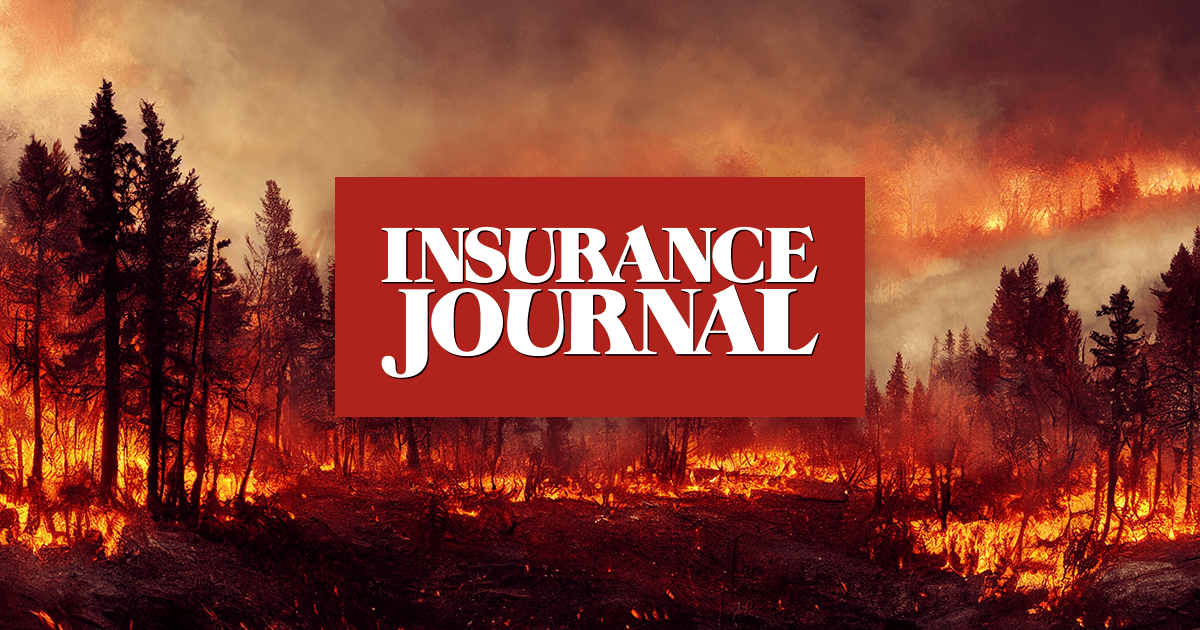According to reinsurance firm Swiss Re, global insured natural catastrophe losses have reached $115 billion in 2022, year-to-date, with hurricane Ian the main contributor at an estimated $50 billion to $65 billion.
2022’s global insured catastrophe losses are set to come in well-above the 10-year average of $81 billion, Swiss Re explained.
Once again, the year has seen a significant contribution to the annual loss tally from so-called secondary perils, with that category estimated to have caused more than $50 billion of the total.
2022 is now the second consecutive year in which the estimated insured nat cat losses reached over $100 billion, which Swiss Re notes continues the trend of a 5% to 7% average annual increase over the past decade.
The global insurance and reinsurance industry covered roughly 45% of the economic losses this year, indicating a large protection gap across the world, Swiss Re said.
Thierry Léger, Group Chief Underwriting Officer, commented, “2022 has been another year of increased natural catastrophe loss activity, and demand for insurance is growing as the protection gap remains vast. To enable the insurance industry to keep up with increasing volatility and demand, it will be key to model evolving frequency and severity trends. Pricing needs to reflect the effective risk. In this complex environment, Swiss Re is ready to support clients with our strong balance sheet, risk capacity and expertise.”
Swiss Re believes that the 2022 loss experience, after five also heavy previous years, “emphasizes a need to adopt a more forward-looking approach for all perils.”
“Model and data availability need to be upscaled for secondary perils such as flood and hail particularly, as they are on the rise but still receive less industry attention,” the reinsurance firm explained.
One example of how risk modelling is advancing to help re/insurers better understand weather and catastrophe exposure is with the rainfall associated to hurricanes.
Swiss Re said that it is now explicitly modelling flooding from hurricane-induced rainfall based on a forward- looking view of rainfall characteristics, rather than using long term historic rainfall averages.
Martin Bertogg, Head of Catastrophe Perils at Swiss Re, added, “Extreme weather events have led to high insured losses in 2022, underpinning a risk on the rise and unfolding on every continent. Urban development, wealth accumulation in disaster-prone areas, inflation and climate change are key factors at play, turning extreme weather into ever rising natural catastrophe losses.
“When Hurricane Andrew struck 30 years ago, a USD 20 billion loss event had never occurred before – now there have been seven such hurricanes in just the past six years.
“At Swiss Re, we are continuously adapting our natural catastrophe models to anticipate trend risks explicitly, enabling us to stay ahead of the curve and provide sustainable cover to our clients – such as with our new hurricane model.”
On top of the $115 billion of insured natural catastrophe losses experienced by the industry in 2022, Swiss Re also estimates that man-made losses added $7 billion, for a total disaster insurance industry loss of around $122 billion for the year.









%2003_06_24.jpg?rect=0%2C22%2C2871%2C1507&w=1200&auto=format%2Ccompress&ogImage=true)































